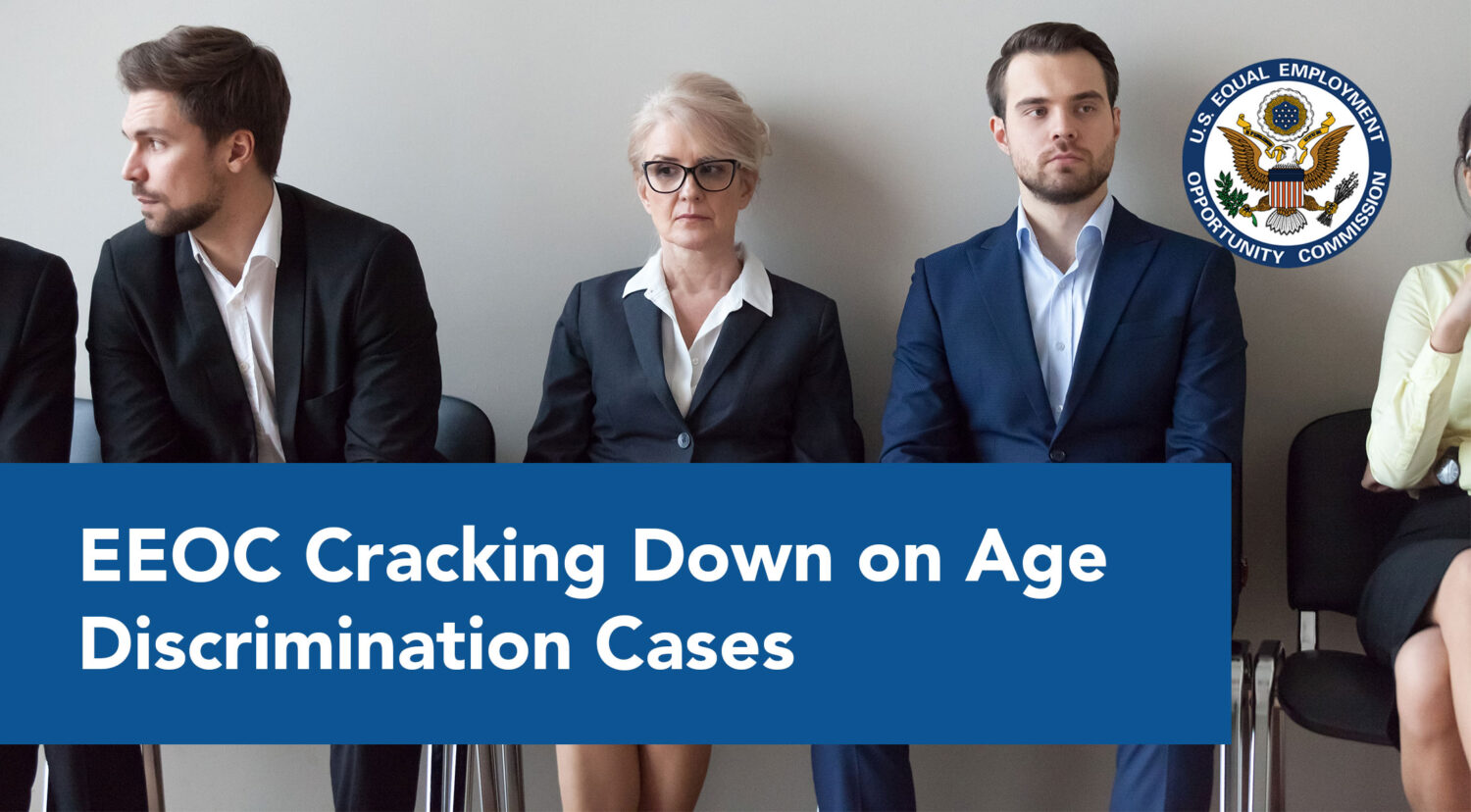

In recent months, the Equal Employment Opportunity Commission (EEOC) has settled several large age discrimination complaints totaling millions of dollars in fines, fees, penalties, and payments to those affected. In fact, the EEOC has announced that age discrimination is one of the priorities identified in its new Strategic Enforcement Plan.
Most recently, on December 19, 2023, a San Diego-based medical group, Scripps Clinic Medical Group, agreed to pay almost $7 million to settle claims that it subjected physicians to age and disability discrimination when they imposed a mandatory retirement age of 75.
According to Scripps, the mandatory retirement policy was established in 2016 to assure patient safety. Both California law and the federal Age Discrimination in Employment Act (ADEA) recognize mandatory retirement policies IF age is a legitimate requirement for the job’s safe and efficient performance. That said, the exception only applies in limited circumstances where age is crucial for job performance and no viable alternatives exist. Furthermore, California law expressly permits mandatory retirement for “any employee who has attained 70 years of age and is a physician employed by a professional medical corporation, the articles or bylaws of which provide for compulsory retirement.” However, the EEOC took the position that while such a policy is expressly legal under California law, it is not allowed under federal law.
According to the EEOC, Scripps imposed the retirement age regardless of individual doctors’ abilities to do their jobs. Therefore, the EEOC found “reasonable cause” that the medical group violated the ADEA and the Americans with Disabilities Act (ADA).
Scripps denied wrongdoing but agreed to rescind the policy as part of the settlement and inform employees that the company does not have any policy in which age is a factor in making employment decisions, including termination, retirement, and terms and conditions of employment.
According to the four-year conciliation agreement with the EEOC, the company will pay out $6,875,000 to a class of individuals impacted by the company’s mandatory retirement age policy. It will also require Scripps’ leadership and members of human resources to attend training on the ADEA and ADA. The EEOC will monitor compliance with this agreement.
In the EEOC press release, EEOC Chair Charlotte A. Burrows said the Commission has included discrimination against older workers among the priorities identified in its new Strategic Enforcement Plan. She went on to say, “Older workers make crucial contributions to our nation’s workplaces. With demographics showing that many people are remaining in the workforce longer, it is critical for employers to understand the ADEA’s protections for older workers.”
Recent Age Discrimination Cases
Earlier that week, the EEOC settled an age claim with a Wisconsin-based molecular diagnostics company, Exact Sciences. On December 14, 2023, Exact Sciences agreed to pay $90,000 to settle an age claim made when the company and its recruiter rejected a sales job applicant because of his age. According to the EEOC, the third-party recruiter for Exact Sciences rejected a 49-year-old applicant for a sales position. The recruiter told the applicant that he was “overqualified” and that the company was “looking for someone more junior that can … stay with the company for years to come.”
The EEOC alleged that this conduct violates the ADEA, which prohibits discrimination based on age. Under the consent decree, Exact Sciences will pay $90,000 in monetary damages to the applicant and implement additional training for hiring managers regarding age discrimination.
In November 2023, a federal judge ruled in favor of the EEOC that Urbana School District No. 116 in Illinois violated federal law by applying a discriminatory provision of a collective bargaining agreement to limit the compensation of teachers aged 45 and older. The Federal Judge agreed with the EEOC that the school district discriminated against older teachers and ordered the district to pay over $51,000 in damages.
In October 2023, Lilly USA, LLC, a pharmaceutical corporation based in Indianapolis, Indiana, was ordered to pay $2.4 million and provide other equitable relief to settle a nationwide class age discrimination lawsuit brought by the EEOC, alleging that the company failed to hire older pharmaceutical sales representatives.
These cases are evidence that age discrimination is real. Two out of three workers between ages 45 and 74 say they have seen or experienced age discrimination at work. Job seekers over age 35 cite it as a top obstacle to getting hired. If you work in the high-tech or entertainment industries, your chances of experiencing age discrimination are even higher.
While the Age Discrimination in Employment Act of 1967 (ADEA) makes it illegal to discriminate against workers aged 40 and up, the exact rules and how they are interpreted, aren’t always so clear to employers.
Important Facts About Age Discrimination:
- Age discrimination is illegal at any stage of employment, including during hiring, promotions, raises, and layoffs.
- The law also prohibits workplace harassment by coworkers, supervisors, or clients because of age. This includes negative comments about age.
- Mandatory retirement ages are prohibited except for a few exemptions, such as airline pilots and public safety workers.
- It is currently legal for employers and prospective employers to ask your age as well as your graduation date. However, state laws in California, Connecticut, Minnesota, Pennsylvania, and Wisconsin do expressly prohibit questions about age during the hiring process.
- A 2009 U.S. Supreme Court ruling made it harder for older workers who’ve experienced proven age discrimination to prevail in court. The court said plaintiffs must meet a higher burden of proof for age discrimination than other types of discrimination. In other words, the Supreme Court moved the law backward and sent a message to employers that some amount of proven discrimination is legally allowed.
- Most people believe age discrimination begins when workers hit their 50s or 60s. The truth is it applies once you’re 40.
- Seventy-two percent of women between the ages of 45 and 74 said they think people face age discrimination at work, and only 57 percent of men in the same age range said so.
- Contrary to stereotypes, workers age 50 and up are among the most engaged members of the workforce, according to one study. Sixty-five percent of employees age 55 and up are “engaged,” compared to 58 to 60 percent of younger employees. They also offer employers lower turnover rates and greater levels of experience.
Takeaways: Employers should review their policies and practices to ensure that they do not directly or indirectly impact employees based on age through employment decisions or terms and conditions of employment. Employers should also implement age and disability discrimination training for all hiring managers and supervisory employees. Be prepared! Age issues are on the EEOC’s radar.
HR Unlimited, Inc. specializes in helping federal contractors and employers effectively meet their AAP and EEO compliance obligations. Please contact us to discuss any of your questions, concerns, or needs in this area.





